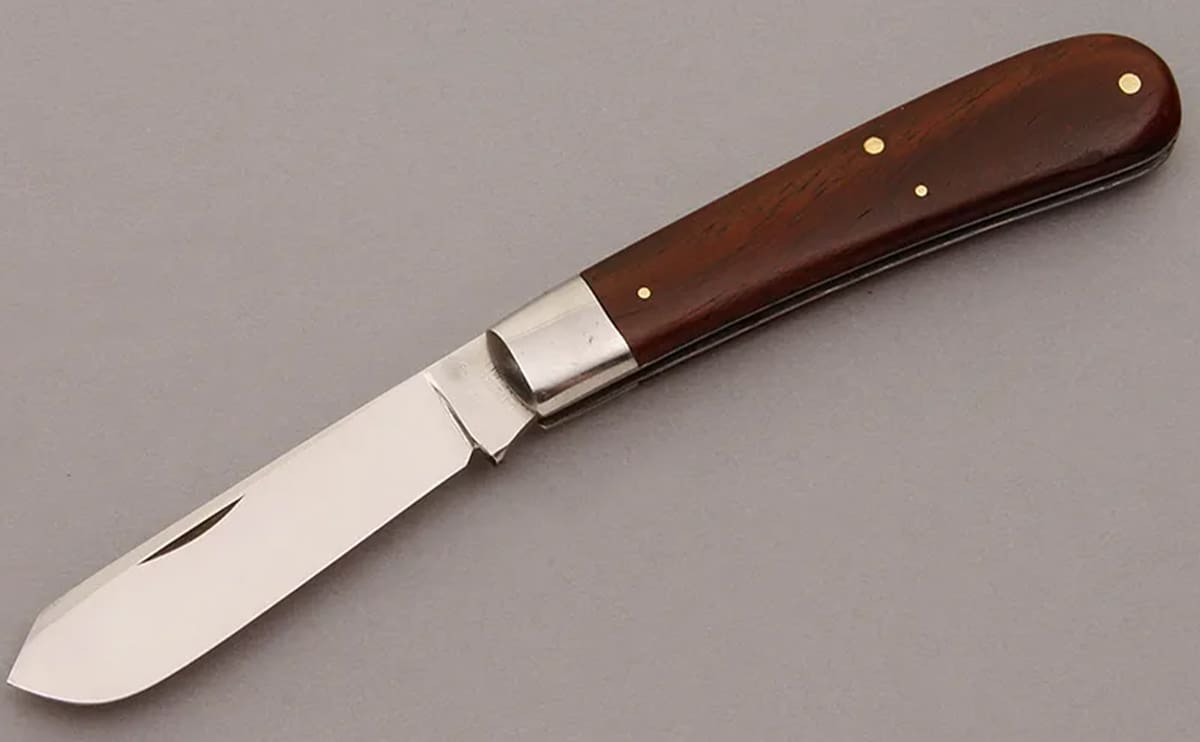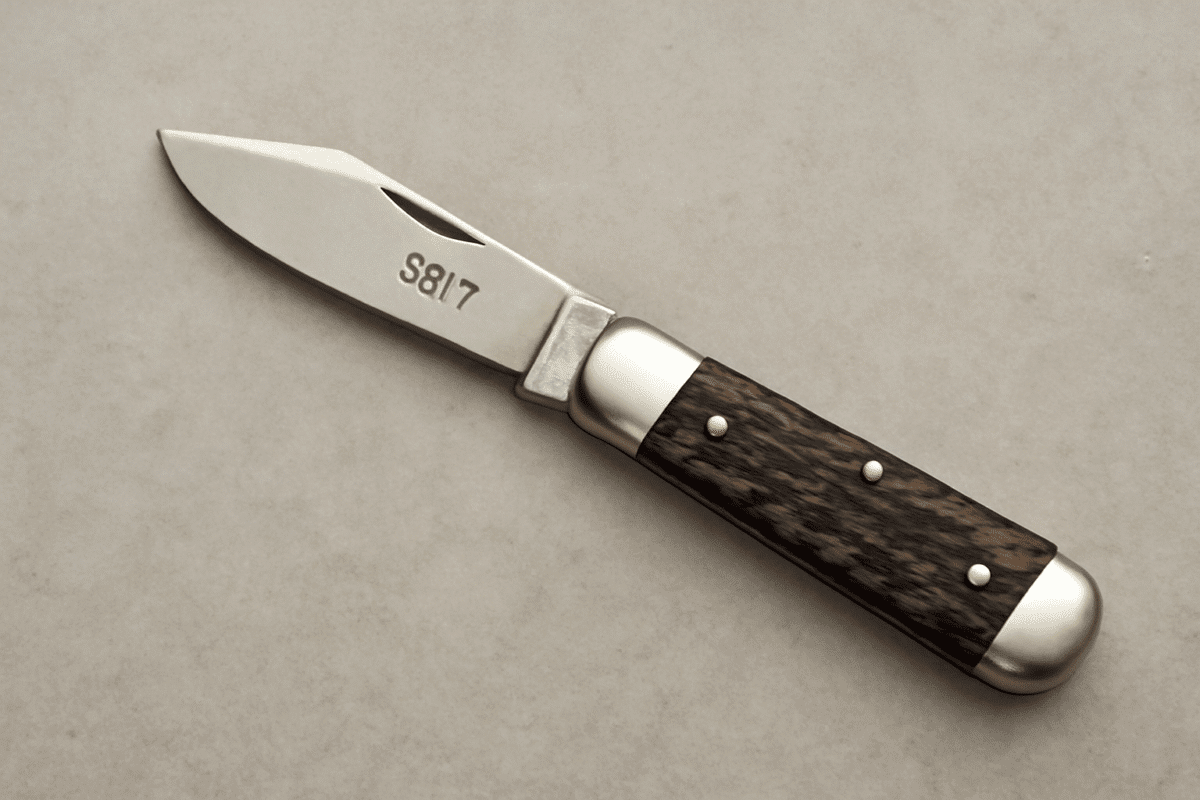What is a Spey Blade? Understanding Its Design, Use, and Importance

When it comes to knives, there are various designs and shapes suited for different tasks. One such specialized blade is the Spey blade, which has earned its place in the toolkit of hunters, butchers, and outdoor enthusiasts. But what exactly is a Spey blade, and why is it so valued in the world of knives? In this article, we’ll dive into the specifics of the Spey blade, its unique design, and its common uses.
Table of Contents
What is a Spey Blade?
A Spey blade is typically a type of curved blade that is used for cutting, slicing, and other detailed work. The name “Spey” itself is most often associated with fly fishing, where it refers to a specific type of fishing fly or a technique known as the “Spey casting” method. However, the Spey blade also has significant use in tools like knives and razors, where its curved shape and design provide distinct advantages.
The unique curvature of a Spey blade allows for precision cutting, making it an ideal choice for tasks requiring detailed, controlled movements. This design is often seen in tools that demand high performance and fine craftsmanship, such as certain types of folding knives, kitchen knives, and even razors.

The Origins of the Spey Blade
The term “Spey” in Spey blade is derived from the Spey River in Scotland, which is famous for its salmon fishing. The fishing techniques developed around the river, particularly the Spey casting method, required specialized gear, including unique types of flies. The Spey blade design originated from the needs of these anglers, where the blade was designed to provide control and precision during tasks like cleaning fish or cutting materials for fly tying.
Over time, the Spey blade evolved and found its place in various other tools. Its design was adapted to make it more versatile in different applications, including culinary knives, survival tools, and outdoor gear.
Spey Blade Design: What Sets It Apart?
Spey blades are known for their distinctive curved edges. The curvature is not just for aesthetic appeal; it plays a crucial role in the blade’s functionality. The shape allows for smoother, more controlled cuts, especially when slicing through materials like skin, leather, or soft tissues. This makes it a popular choice for chefs, hunters, and even barbers.
The distinctive features of a Spey blade include:
- Curved Cutting Edge: The edge of the blade has a gentle curve, which allows for efficient slicing motions without excessive effort. In fly fishing, the blade’s function is more specific. It’s used for precise and clean cuts when creating flies or cleaning fish. The curve allows for smooth cuts along the fish’s body without damaging delicate tissues, ensuring that the process is both effective and gentle.
- Blunt or Rounded Tip: Unlike pointed blades, the tip of a Spey blade is typically dull or rounded. This feature is crucial for preventing accidental punctures while performing delicate work, especially when skinning or cutting around sensitive areas.
- Flat Spine: The spine of the Spey blade is usually straight, making it ideal for precision cutting tasks where control is important.
Common Uses of a Spey Blade
The design and functionality of the Spey blade make it suitable for various practical uses, particularly in the fields of hunting, butchering, and outdoor survival. Let’s look at some of the most common applications for this specialized blade:
1. Fly Fishing
In the context of fly fishing, the Spey blade plays an essential role in fly tying. Fishermen use the curved blade to cut delicate materials such as feathers and fur, which are used to make flies for fishing. The blade’s precision is vital to crafting the perfect fly that mimics a real insect or baitfish.
2. Knives and Razors
Spey blades are found in a range of knives, particularly those designed for delicate work. The curved edge makes it easier to maneuver and cut with precision, making it a popular choice for chefs, outdoor enthusiasts, and even barbers. Whether it’s a kitchen knife designed for filleting fish or a specialized razor for shaving, the Spey blade excels in providing control.
3. Hunting and Outdoor Tools
Hunting knives and tools often feature Spey blades due to their ability to make clean, controlled cuts on game. This blade type is perfect for tasks such as skinning or cleaning, where precision and efficiency are critical. The curvature ensures that hunters can work without damaging the meat or the hide of the animal.
4. Craftsmanship and Leatherworking
Spey blades are also common in the world of craftsmanship and leatherworking. The curved edge allows artisans to cut through leather with ease, creating intricate designs without worrying about jagged edges or uneven cuts. The blade’s control makes it an ideal tool for those working in industries where precision is key.
Why is the Spey Blade Popular?
Several features make the Spey blade popular among hunters, outdoorsmen, and collectors alike:
- Safety and Control: The rounded tip minimizes the risk of accidental punctures, which is particularly important in delicate situations such as skinning or gutting.
- Versatility: While it is often associated with hunting and butchering, the Spey blade can be used for a variety of other tasks, making it an all-around useful tool.
- Historical Significance: The Spey blade has a long history and remains a respected tool in the knife community. Its inclusion in traditional pocket knives or hunting knives speaks to its reliability and functionality.
Choosing a Spey Blade: What to Consider
If you’re looking to add a Spey blade to your collection or use it for a specific purpose, here are some factors to consider:
- Blade Material: The steel used for the blade is important for its performance and durability. Look for high-quality stainless steel or carbon steel blades, which are both known for their sharpness and resistance to corrosion.
- Handle Design: A comfortable, ergonomic handle is crucial for extended use. Many hunting knives with Spey blades come with handles made from materials like wood, bone, or synthetic materials that provide a secure grip.
- Knife Type: Spey blades are often found in traditional folding knives or multi-blade pocket knives. When selecting a knife, consider whether you need the versatility of multiple blades or the simplicity of a single blade.
Conclusion: The Enduring Appeal of the Spey Blade
The Spey blade is a timeless tool that remains invaluable in the world of hunting, butchering, and outdoor survival. Its precise design, with a blunt or rounded tip and curved cutting edge, makes it a go-to choice for delicate tasks requiring control and safety. Whether you’re an experienced hunter or a knife enthusiast, the Spey blade is a tool worth understanding and considering for your next outdo




